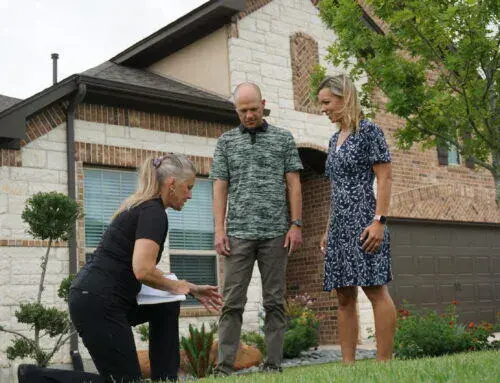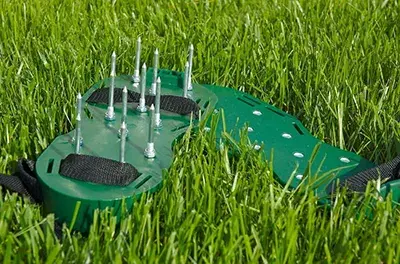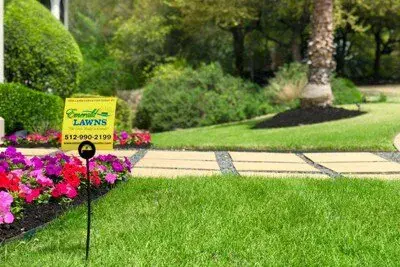Question: What does topdressing cost at Emerald Lawns?
Answer: This will require a sales representative to measure your lawn and/or the specific area you desire to apply the topdressing!
Question: How does lawn leveling differ from grading?
Answer: Grading would strip the lawn prior to application causing weeks to months of recovery time; we do not perform this service.
Question: When should I see results from my last topdressing treatment?
Answer: If you combined liquid aeration and topdressing, you will notice results faster and that last longer. When the temperatures warm up you will notice your lawn to be more vibrant. The key to remember – with topdressing, you are improving your soil’s composition which improves with an annual application.
Question: When is the best time to apply topdressing to my lawn?
Answer: There are 2 primary windows for optimum results! The 1st is January – May and the 2nd is late September – December.
Question: Do I need to aerate my lawn if I get topdressing?
Answer: We strongly encourage liquid aeration and topdressing! Liquid aeration opens up pores, creating pathways that run deep and broad for the nutrients to flow down to. Your roots will “chase” those nutrients thereby making your root system deep and dense. This in turn produces thick healthy turf!
Question: What is Emerald Lawns topdressing composed of?
Answer: As with all other applications Emerald Lawns chooses for improving soil health, we carefully select our topsoil based on the needs for Central Texas soil (which is compact, clay with high pH).
Cotton Burr – because it contains both macronutrients and micronutrients is a valuable ingredient for soil and turf-root restoration thereby aiding plant growth in the spring.
The burr is comprised of the cotton plant’s organic leftovers such as its seeds, stalks, and leaves which are a nutrient-dense and rich source of nitrogen for the compost. In addition to its nutrients, cotton burr contains high levels of useful microbes and bacteria which are outstanding for loosening clay soil. These properties make it a first-rate ingredient for amending the soil.
Pine Shavings – help the soil retain moisture, and will contribute to the flow of oxygen, water, and nutrients into the soil through the pores it creates. The pine is an excellent source of potassium, phosphorous, iron, magnesium, and additional minerals to restore the soil composition.
Pine Sawdust – is used to add carbon to the mix and to balance the nitrogen. In the fall your soil doesn’t require a “double-shot” of nitrogen for turf growth.
Rice Hulls – have three valuable attributes for amending the soil. They assist in water retention, aeration, and add organic matter to the soil, which are important in the fall and winter months.
Question: When should I see results from my lawn aeration treatment?
Answer: If you are watering and mowing correctly, as a rule of thumb, during the growing season you should see results in 2 weeks. For weed treatments (and depending on the specific weed type) you should see “curling & wilting” in about a week. It may take up to 3 weeks for weeds to die, longer in the winter, early spring, and late fall.
Question: For leveling, how big of a hole can we fill with one application?
Answer: Our topdressing machine will apply a smooth, even layer of sand, about ½” thick. For larger divots, we will shovel sand to fill in problem spots and deploy our leveling rake & commercial brush to smooth it over. We need to make sure about ¼” of grass protrudes through the sand so as not to cause damage to the existing turf.
Question: Will one leveling application smooth all the holes and bumps from the lawn?
Answer: Unfortunately, this is usually not the case. We will do our very best to smooth these out, however, after the application has settled, there can be additional pockets that will need to be filled. When we water (or it rains), the sand often filters down into tiny air pockets in the soil, creating a need for additional applications.
Question: When is the best time to apply the leveling sand to my lawn?
Answer: Any time the grass is actively growing is an excellent time to apply the leveling application, typically mid-May through mid-October.
Question: How often should I water my lawn after a leveling application?
Answer: We recommend it at least twice a week. The more frequently you water, the quicker it will allow the grass to grow through.
Question: How soon can I apply a second leveling application if needed?
Answer: As long as we are still in the growing season and the previous application of sand has settled in, we can apply other applications as needed.
Question: Where can I get a rebate for Topdressing?
Answer: Here is a list of a few municipalities that participate. If your city is not listed, please check your local utility website.
Question: Will the leveling sand get too hot in summer and burn my grass?
Answer: No, although the surface of sand will retain heat, it will stay relatively cool below the surface, leaving no adverse effects on the lawn.
Question: Should I mow my lawn before a leveling application?
Answer: Yes, mow at half the lawn mower height prior to application to allow a faster recovery.
Question:How do I know if I need topdressing?
Answer: If your lawn is thin, dull in color, and/or subject to heat stress. Due to our thin and poor soil, topdressing is the single most effective solution you can do for your soil and lawn regardless of its age! We strongly recommend 1 application each year.
Question: How will an application of leveling sand affect mowing the lawn?
Answer: Mowing the lawn in the area where sand has been applied will not be necessary until the sand “settles” into the soil; typically, after two weeks.
![]()


